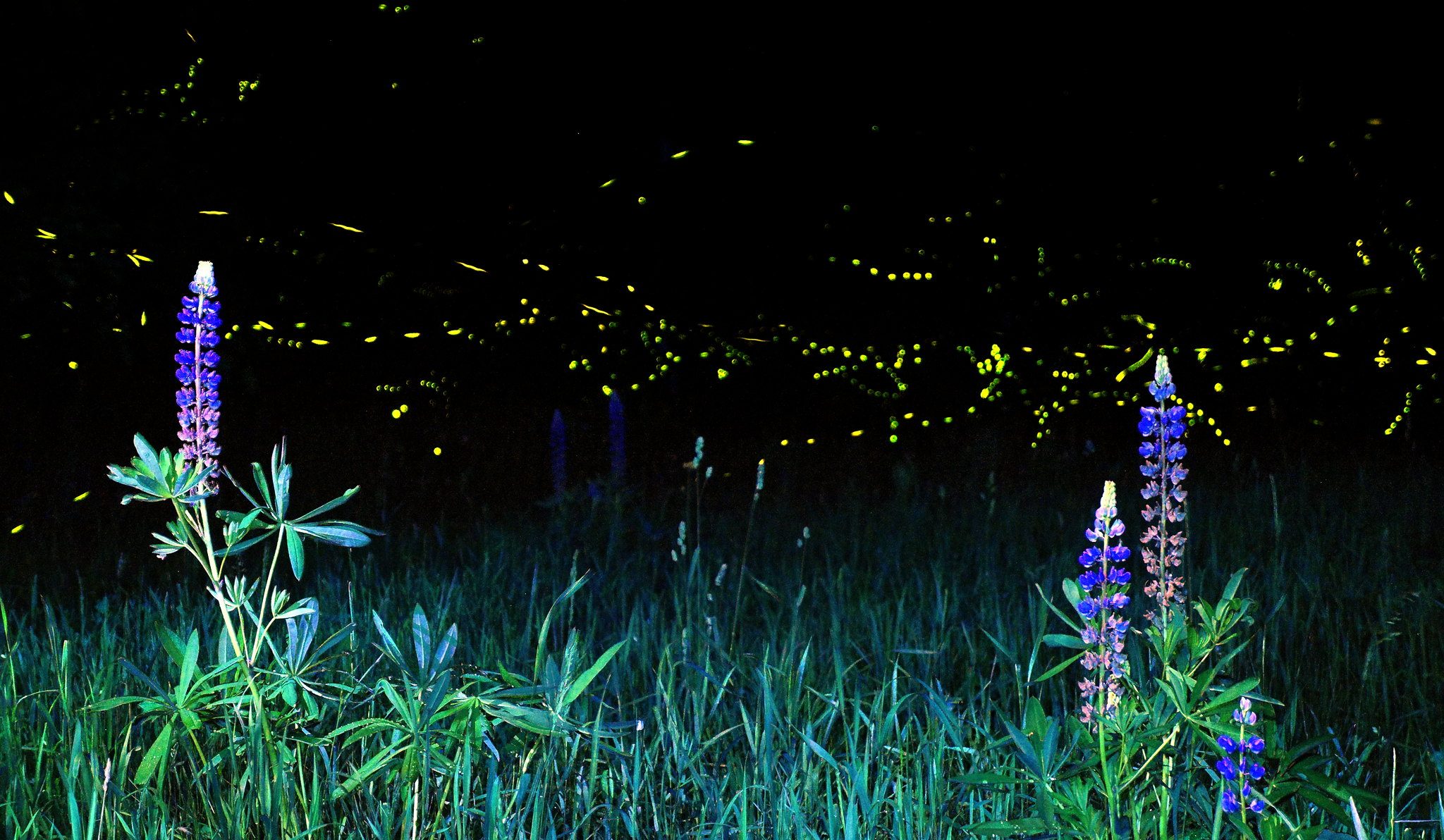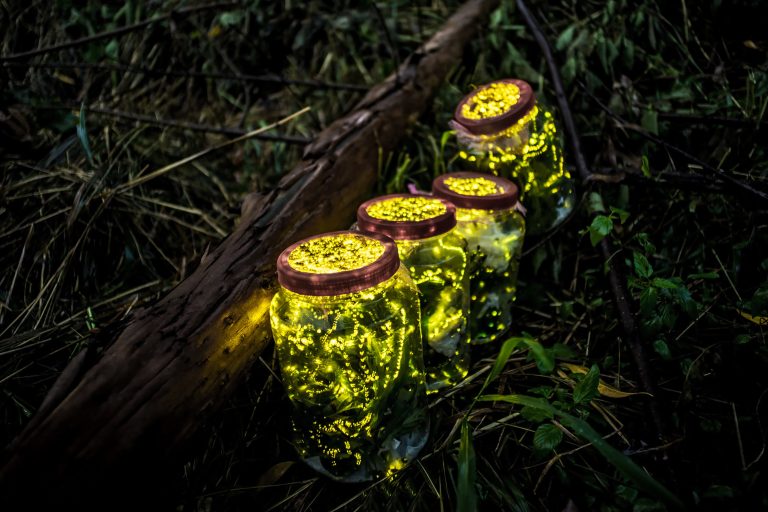One of the most magical sights of summer is the rural landscape lit up by fireflies at dusk. Reminiscent of twinkling stars come to Earth, or even fairy lights, they transport you to another world of enchantment and awe. It is no wonder these tiny beacons of light carry spiritual significance and have inspired folklore the world over.
As nocturnal members of the Lampyridae family, (derived from the Greek word “lampein,” meaning “to shine”) fireflies are actually beetles. While there are over 2000 species of these insects, they are not all equipped with the ability to produce light. That ability manifests as a chemical process whereby certain species mix oxygen with the pigment luciferin, causing a chemical reaction so efficient that nearly all of the energy becomes light.
Varied mythical origins
There may be as many myths revolving around the origin of fireflies as there are countries where they are found. Chinese folklore held that fireflies came from burning grasses, while the Japanese believed they were the souls of dead warriors who fell in battle. The Apache tribe of Native Americans had a legend about a fox who stole fire from the “Firefly Village” and fled, passing the fire on to the Hawk, who then scattered the embers around the world, bringing fire to the people.
Taiwan has a tragic tale of a motherless girl and her sister. After their father was delayed on business and failed to come home one night, the carefree and impulsive younger sister ran off to find him alone. The older sister, named Kim-ko, went out into the black of night, blindly searching for her lost sister. Groping her way through the forest, she prayed to the gods for light to guide her to her only sibling.
Success
You are now signed up for our newsletter
Success
Check your email to complete sign up
In the morning, the villagers found Kim-ko’s dead body in a pool of water, with glowing orbs floating all about her. The gods had answered her prayer, but too late. She had stumbled into a body of water and drowned. Since then, the Taiwanese have called fireflies Hóe-kim-ko, literally “Fiery Maiden of Gold” after their tragic heroine.
While Victorians fostered a tradition whereby a firefly found in the house meant that someone was about to perish, we can take this with a giant grain of salt, as they were a fairly gloomy lot to begin with. Most populations associate the insect with hope and inspiration. Ancient peoples considered them effective as a remedy for a wide range of maladies, including poison and evil spirits.
A visual Morse code
As you may have guessed, the intermittent glow that these beetles emit is a form of communication. Fireflies use their bright behinds to attract a mate. The flashing pattern varies by species, but generally a male will fly about, signaling that he is in search of a single glowing female. The female, not in flight, will answer with an appropriate flash if and when she takes an interest.
In most cases this works quite admirably. However there are villains in the insect world as well. One species of fireflies is a known cannibal, and will mimic the proper female response for another species, luring the hopeful male down to become her dinner.
There are also synchronous fireflies in certain areas, like the Great Smoky Mountains National Park. Tens-of-thousands of Photinus carolinus males gather together and synchronize their flash, creating a stunning effect for viewers. Due to limited parking, only 1000 visitors per evening are permitted to see the fireflies at their peak in popular Elkmont Campground.

Practical scientific applications
The chemical reaction responsible for fireflies’ enchanting glow may have practical applications in at least two areas. Cancer researchers have found that, when inserted into malignant cells modified with a photosensitizer (i.e. the enzyme luciferase), Luciferin (the compound substrate that produces a firefly’s bioluminescence) creates enough light to destroy the cell. Since the light is generated within the cell itself, this treatment eliminates the need for the use of lasers or other light beams.
Engineers are turning to botany at MIT, where they have applied the firefly’s glow to living plants. Using nanoparticles infused with the proper ingredients to trigger the chemical reaction, these researchers have successfully transformed several plants into live lamps, with the proposed potential to reduce energy usage.
The fading light
While these tiny twinklers continue to inspire new research all the time, their numbers are on decline. Starting their lives as larvae, most species inhabit the lower layer of wooded areas with a nearby water source. Dead wood and leaf litter provide food in the form of snails, slugs, and worms during this growing stage.
When ready to metamorphose into a beetle, they pupate in a mud chamber underground. Emerging adults have the sole purpose of reproducing, and do not stray from their locale. Thus, when these marginal areas are cleaned up and paved over, the fireflies are lost, rather than relocated.
Property owners wishing to maintain a firefly-friendly habitat, should allow a stretch of wooded area to remain natural and untidy. Even if you have only a small garden, you can leave some decaying plant matter for larval firefly food, rather than stripping everything pristine clean for the neighbors. This is good for other beneficial insects as well, like native bees.
A tiny light in the dark can serve as a sign of hope, an inspiration and even a guide. Let us do what we can to preserve that light.















